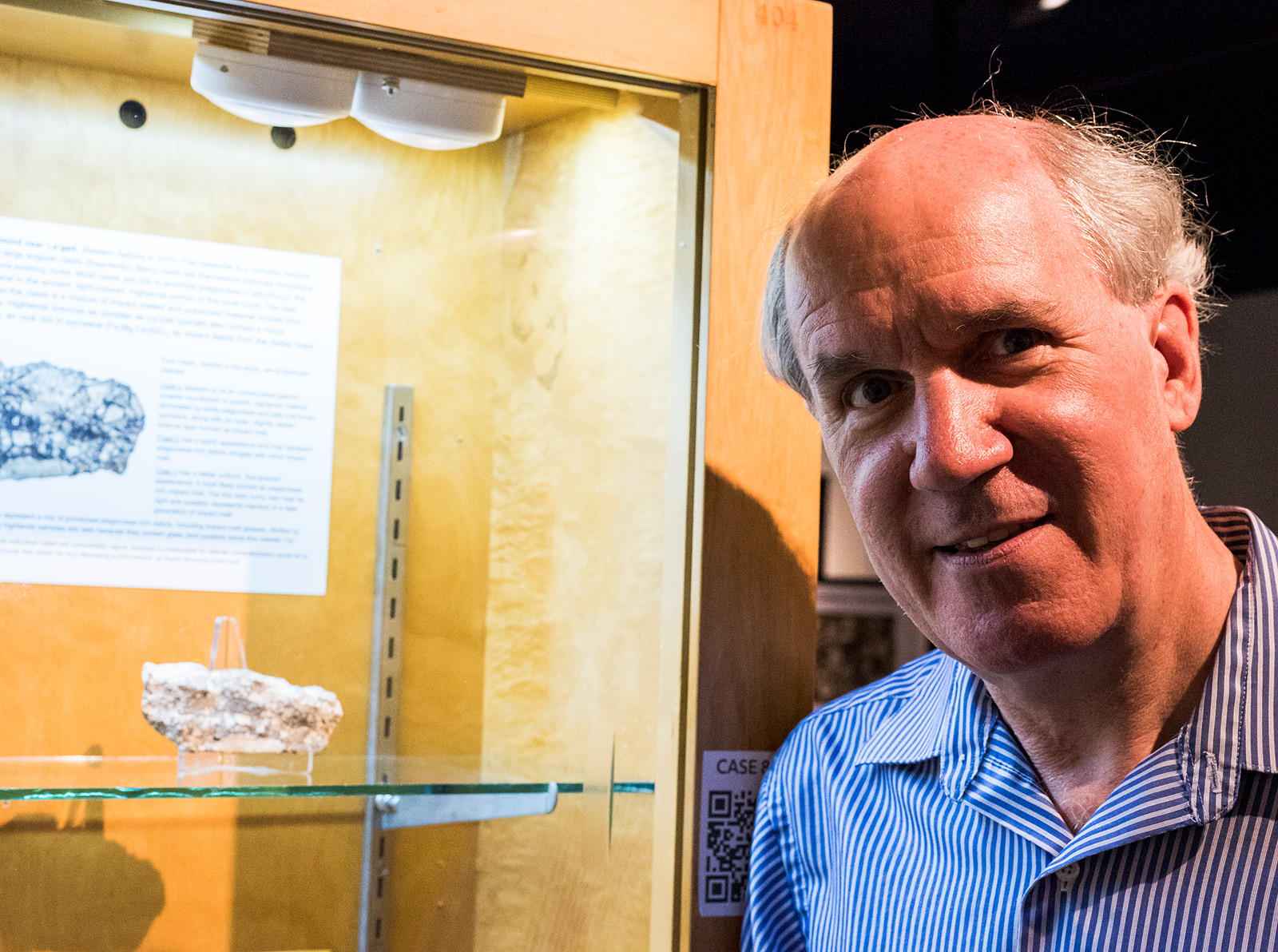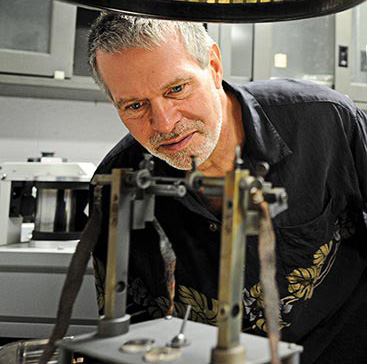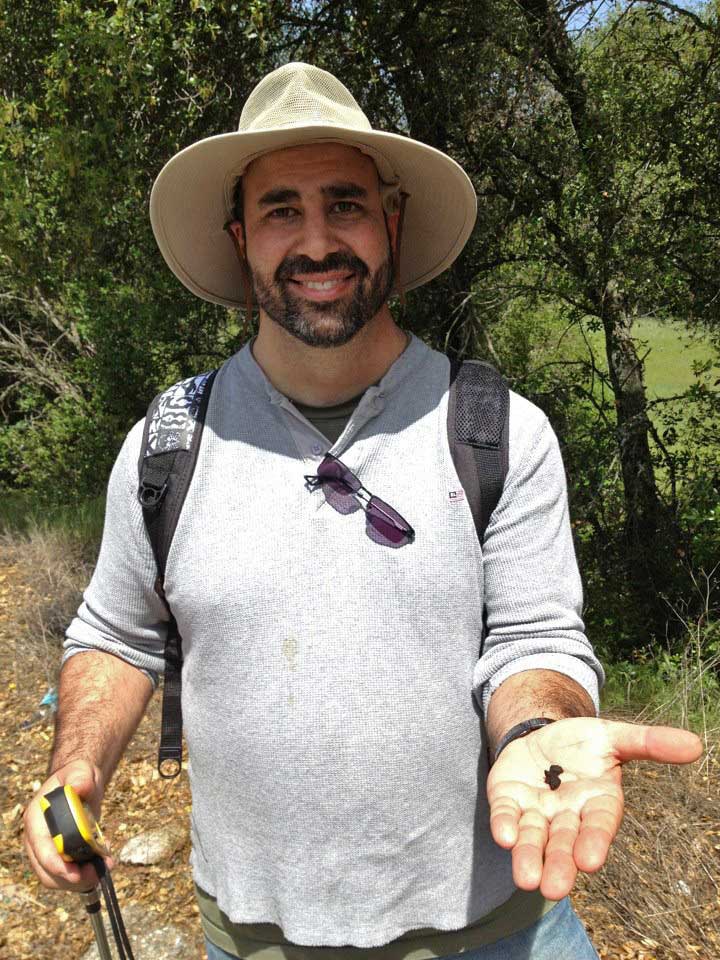Gallery Events
Dec
182022 |
Dr. Paul Warren; UCLALunar meteorites: Finally, a few anorthositesLocation: https://www.youtube.com/watch?v=MY4q8H9MbHA
By some estimates, most of the Moon’s outsized crust consists of anorthosite, an igneous rock with more than 90% of the calcium-aluminum silicate mineral plagioclase. Plagioclase has an unusually low density, and the lunar crust is believed to have formed in a unique way by buoyant flotation of plagioclase over a global magma ocean. Some authors have even claimed the lunar-crustal plagioclase abundance is generally greater than 98%. Yet only within the past year were the first three anorthosite lunar meteorites discovered. I will discuss these new anorthosite meteorites and some other aspects of lunar rock studies that constrain the magma ocean hypothesis.
This is a pre-recorded video that will be uploaded to Youtube. There will be no Zoom lecture in December. 
|
Nov
202022 |
Dr. Elena Dobrica; University of Hawai’iStaring at the Solar System through a MicroscopeLocation: https://ucla.zoom.us/meeting/register/tJEqduyupj0vGd3S0_52FsbHTbPjYr0sZQUj
For decades, the study of chondritic meteorites has been driven by a perpetual quest to identify and understand the most pristine materials formed in the early Solar System. The goal of this presentation is to discuss the physicochemical conditions of these materials and their evolution within the protoplanetary disk and later on the chondrite parent bodies. Following asteroidal accretion, multiple secondary processes come into play, such as thermal- and shock-induced metamorphism, metasomatism, and aqueous alteration, which modify these pristine components of chondrites. These processes begin to occur even at very low degrees of secondary alteration. Therefore, understanding these secondary processes will help us to determine the characteristics of the earliest Solar System materials. Today, electron microscopy is one of the primary nanoscience tools, allowing us to carry out various observations that transform electron microscopy into a versatile micro- and nanoscale laboratory to obtain fundamental insight into nucleation, growth, and evolution of returned samples, meteorites, and dust particles. -Recording Not Available- 
|
Oct
162022 |
Dr. Emmanuel Jacquet; Muséum National d'Histoire NaturelleRefractory inclusions, the first solids of the Solar SystemLocation: https://ucla.zoom.us/meeting/register/tJEqduyupj0vGd3S0_52FsbHTbPjYr0sZQUj Among the components of chondrites (or primitive meteorites), refractory inclusions, while making up only a minor proportion thereof, have achieved prominence in being the oldest dated solids of the Solar System. They are believed to have originally formed by condensation out of a gas of solar composition at temperatures of 1500-2000 K, perhaps during the very building stage of our protoplanetary disk. The exact astrophysical setting of their formation is uncertain. Early models had them formed at the very inner edge of the disk so as to benefit best from sunlight and account for the presence of some short-lived radionuclides. However, that tiny region may have been hostile to the survival of a significant number of refractory inclusions and evidence is mounting in favor of formation over a wider range of heliocentric distances, up perhaps to the current position of the Earth. 
|
Sep
182022 |
Dr. Robert Hazen; Carnegie Institution for ScienceMineral Evolution and the Rise of Mineral InformaticsLocation: https://ucla.zoom.us/meeting/register/tJEqduyupj0vGd3S0_52FsbHTbPjYr0sZQUj The story of Earth is a 4.5-billion-year saga of dramatic transformations, driven by physical, chemical, and biological processes. Sequential changes of terrestrial planets and moons are best preserved in their rich mineral record. Earth's “mineral evolution,” began with a score of different mineral species that formed in the cooling envelopes of exploding stars. Dust and gas from those stars clumped together to form our stellar nebula, the nebula formed the Sun and countless planetesimals, and alteration of planetesimals by water and heat resulted in the 300 minerals found today in meteorites that fall to Earth. Earth’s evolution progressed by a sequence of chemical and physical processes, which ultimately led to the origin-of-life. Once life emerged, mineralogy and biology co-evolved, as changes in the chemistry of oceans, the atmosphere, and the crust dramatically increased Earth’s mineral diversity to the more than 5800 species known today. Data-driven discovery in mineralogy exploits large and growing data resources, coupled with powerful analytical and visualization methods, and is ushering a new era of "mineral informatics.” 
|
Jul
172022 |
Mendy M. Ouzillou; Chief Meteorite Officer of SkyFall Meteorites, and Founder and President of the Global Meteorite AssociationOur Meteorite Community: How a Unique Symbiosis Expands our Knowledge of Meteoritics and Planetary ScienceLocation: https://ucla.zoom.us/meeting/register/tJEqduyupj0vGd3S0_52FsbHTbPjYr0sZQUj Meteorites represent one of the most unique collectables in our solar system, and not just for their “out of this world” origins. Their ability to be subdivided and still maintain scientific and monetary value forms the basis of the unique symbiosis that exists between the scientist/researcher/curator and the hunter/dealer/collector communities. For this relationship to expand and strengthen requires not only care but understanding as well. This presentation will provide insights into how meteorites are brought to market and science, the positive roles of hunters, dealers and collectors in the advancement of science, and the motivations driving the various parties along the chains of custody. The goal of the presentation is to increase mutual respect and understanding by addressing complex issues impacting our communities so that we may work more closely together. 
|